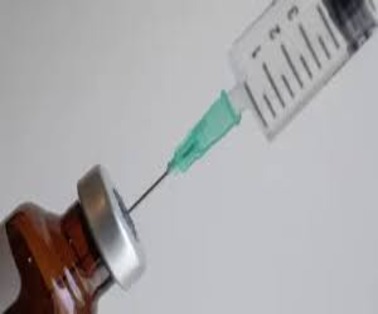In a landmark judgment, the Supreme Court of India overturned a Telangana High Court decision that had rejected a detenu’s appeal. The Court strongly emphasized that preventive detention should not be used arbitrarily and must be exercised with utmost care and consideration.
Key Points
- It clarified that preventive detention is meant to avert future harm, not as a form of punishment, and should be based on careful consideration of facts.
- The court highlighted that preventive detention is a severe measure and should not be invoked routinely or arbitrarily by authorities.
- The Supreme Court also underscored that the grounds for detention must be clearly stated, and the decision should be based on a thorough examination of relevant facts.
- The court clarified that preventive detention is to prevent future harm, not as punishment, and must be based on careful consideration of facts.
What Is Preventive Detention?
- Preventive detention means detention of a person without trial and conviction by a court.
- Its purpose is not to punish a person for a past offence but to prevent him from committing an offence in the near future.
- In other words, preventive detention is an action taken by the administration on the grounds of the suspicion that some wrong actions may be done by the person concerned which will be prejudicial to the state.
- A police officer can arrest an individual without orders from a Magistrate and without any warrant if he gets any information that such an individual can commit any offense.
Constitutional Provisions on Preventive Detention
- The Article 22 of the Indian Constitution provides safeguards against the misuse of police powers to make arrests and detentions.
- The clause (2) of Article 22 reads, “Every person who is arrested and detained in custody shall be produced before the nearest magistrate within a period of twenty-four hours of such arrest excluding the time necessary for the journey from the place of arrest to the court of the magistrate and no such person shall be detained in custody beyond the said period without the authority of a magistrate.
- The clause (4) of the article states that no individual can be detained for more than 3 months unless a bench of High court judges or an Advisory board decides to extend the date.
- The clause (5) of the Article 22 states that the detained individual should be made aware of the grounds he/she has been detained (in pursuance of the order) and should provide him/her with an opportunity of making a representation against the case.
- Parliament may by law prescribe the circumstances under a person may be detained for a period longer than three months under any law providing for preventive detention without obtaining the opinion of an Advisory Board.
Exceptions For Preventive Detention
Article 22(3) says that the above safeguards are not available to the following:
- If the person is at the time being an enemy alien
- If the person is arrested under certain law made for the purpose of “Preventive Detention”
Grounds For Preventive Detention Are:
- Security of state.
- Maintenance of public order.
- Maintenance of supplies and essential services and defence.
- Foreign affairs or security of India.
What Is The Difference Between Preventive Detention And An Arrest?
An ‘arrest’ is done when a person is charged with a crime. An arrested person is produced before a magistrate within the next 24 hours.
In case of preventive detention, a person is detained as he/she is simply restricted from doing something that might deteriorate the law-and-order situation.
Under What Laws Can The State Order Preventive Detention?
Among central legislations, the National Security Act, the Conservation of Foreign Exchange and Prevention of Smuggling Activities Act, 1974 (COFEPOSA) are examples of laws under which preventive detention can be ordered.
As many as 25 states also have preventive detention legislations, like the Telangana law, which is called The Telangana Prevention of Dangerous Activities of BootLeggers, Dacoits, Drug-Offenders, Goondas, Immoral Traffic Offenders, Land-Grabbers, Spurious Seed Offenders, Insecticide Offenders, Fertiliser Offenders, Food Adulteration Offenders, Fake Document Offenders, Scheduled Commodities Offenders, Forest Offenders, Gaming Offenders, Sexual Offenders, Explosive Substances Offenders, Arms Offenders, Cyber Crime Offenders and White Collar or Financial Offenders Act, (PD Act), 1986.
These are expansive laws specifically addressed to local law and order issues. Other examples are the Tamil Nadu Prevention of Dangerous Activities of Bootleggers, Drug Offenders, Forest Offenders, Goondas, Immoral Trafficking Offenders and Slum Grabbers Act, 1982; the Gujarat Prevention of Antisocial Activities Act, 1985; the Bihar Control of Crimes Act, 1981, etc.
Historical Context of Preventive Detention in India
- During World War I and II, considering the object of preventive detention, England created certain emergency acts like the Realm Act and the Emergency Powers (Defence) Act.
- All such acts were specially designed for emergency purposes during war-time but also ceased to exist after the wars ended.
- However, the Defence Act was replaced by peacetime preventive detention laws such as the Rowlett Act (1919) and Bengal Criminal Law Amendment Ordinance, after World War I.
- During the pre-Independence period of India, in the British era, the then government was allowed to arrest any person on mere suspicion under the Bengal State Prisoners Regulation, III of 1818.
- The rules laid down in the Defence of India Act, 1939 permitted a person to detain if he was satisfied that such detainment was essential in order to prevent him from behaving in any way detrimental to the nation’s security and defence.
Post-Independence
- The first Preventive Detention Act was passed in 1950. The validity of this act was challenged in the Supreme Court in the Gopalan v/s State of Madras Court. The Supreme Court held this act constitutionally valid except some provisions.
- This act expired in 1969, and before it expired, it was amended for 7 times, each expansion was to make it valid for 3 more years and this it was extended till 31 December 1969.
- In 1971, the Maintenance of Internal Security Act (MISA) was passed. MISA was basically a modified version of the PDA Act. It was abolished in 1978.
- Another law, Conservation of Foreign exchange and Prevention of Smuggling Activities (COFEPOSA) was enacted in 1974 and it continued.
- In the heat of the terrorism in Punjab the Terrorist & Disruptive Activities (Prevention) Act or infamous TADA was enacted in 1985. It was renewed in 1989, 1991 and 1993 and lapsed in 1995 due to increasing unpopularity due to widespread allegations of abuse.
- Another similar act Prevention of Terrorism Ordinance (POTO) of 2001 came into force.
- Both the TADA & POTO were later succeeded by another controversial Prevention of Terrorist Activities Act (POTA) during 2002-04. This act was supported by the NDA Government but later was scrapped by the UPA government.
- After the Bombay attacks of November 26, 2008, parliament enacted another anti-terror law known as Unlawful Activities (Prevention) Act.
Issues With Preventive Detention
- Arbitrariness: The police determinations of whether a person poses a threat are not tested at a trial by leading evidence or examined by legally trained persons.
- Rights violation: Quiet often, there is no trial (upto 3 months), no periodic review, and no legal assistance for the detained person.
- Abuse: It does not provide any procedural protections such as to reduce detainees’ vulnerability to torture and discriminatory treatment, and to prevent officials’ misusing preventive detention for subversive activities.
- Tool for suppression: In the absence of proper safeguards, preventive detention has been misused, particularly against the Dalits and the minorities.
Conclusion
The Supreme Court’s ruling is a reminder that preventive detention should remain an exceptional measure, exercised under strict scrutiny and transparency. It underscores the importance of balancing national security with constitutional rights and calls for a re-evaluation of laws to prevent misuse.
To Download Monthly Current Affairs PDF Click here
Click here to get a free demo
Discover all about CLAT Exam



